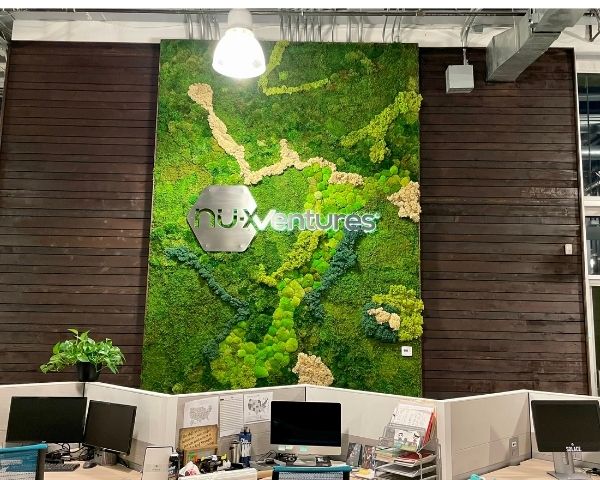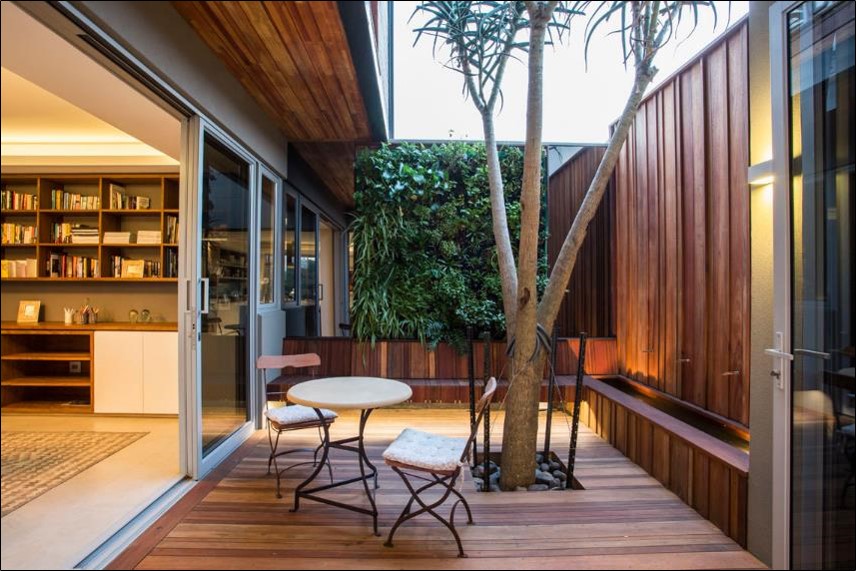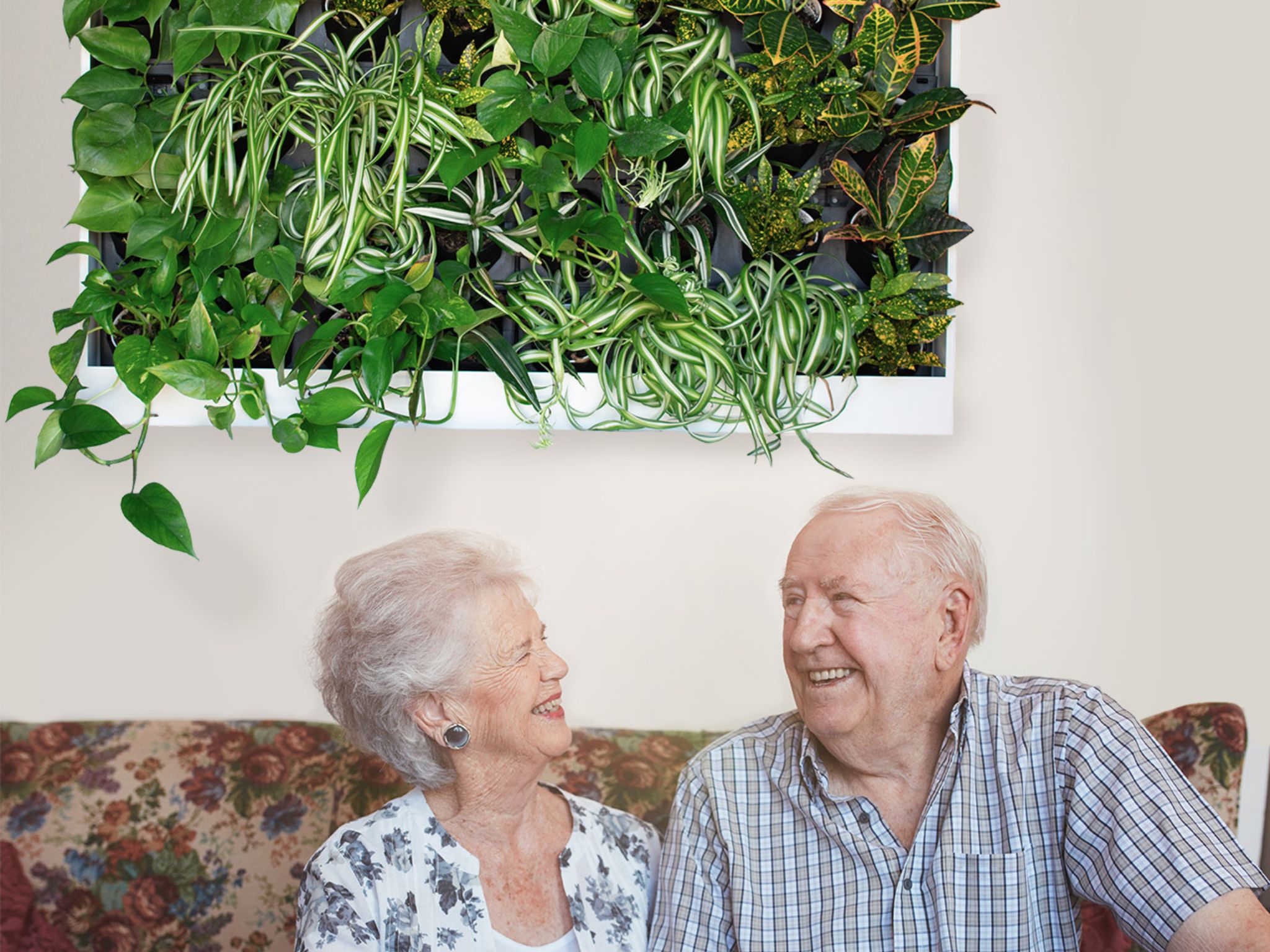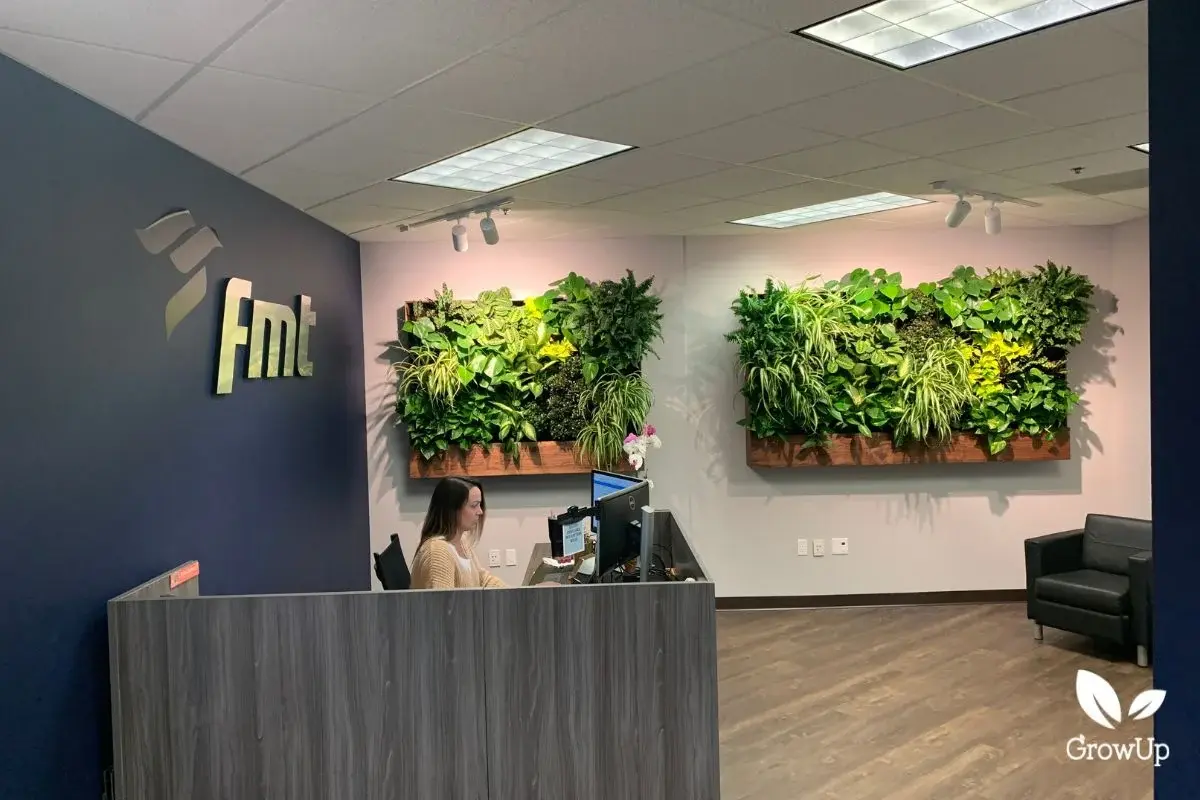Biophilia is defined as “a love of life or living systems”, and encompasses the human inclination to enjoy, affiliate with, or appreciate nature.
Biophilic design is the process we use to include nature in our day-to-day lives through applications in architecture, interior design, and plantscaping. Biophilic design uses elements that are natural, or hark back to nature in their look, feel, or movement. Metropolis states that “biophilic design recognizes that our species has evolved for more than 99% of its history in adaptive response to the natural world.”
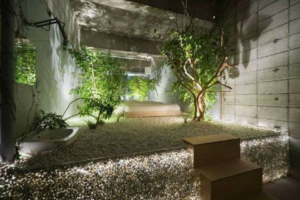
A perfect example from Decoist.
Human Wellness in a Manufactured Age
Currently, our downtime is severely limited, and people in offices and industrial environments are becoming more disconnected from nature. This is less than ideal, considering that the time the human race spent in agrarian settings may mean that we are genetically tied to nature.
Call it what you may, but embracing our links to the natural world is a simple and effective way of improving our health and wellness.
Oliver Heath Design notes that the “World Health Organisation expects stress-related illness, such as mental health disorders and cardiovascular disease, to be the two largest contributors to disease by 2020”.
Finding ways to mitigate these risks by bringing nature back into our daily lives will pave the way for improved mental and physical recuperation.
The simplest solution: Bring greenery into your spaces.
How does Biophilic Design Work, and Where Can Greenwalls Help?
The overarching narrative of the case for Biophilic Design is that, as a species, we cannot flourish without acknowledging our connection to nature and incorporating it into our daily lives. As mentioned above, our mental and physical well-being rely heavily on our relationship and proximity to the natural world.
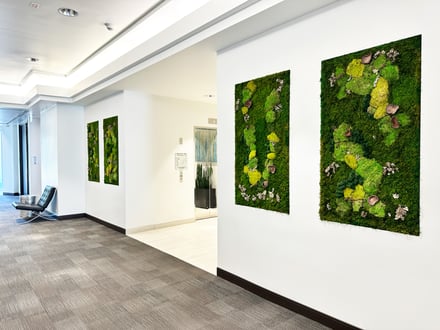
Creating natural spaces within our built-environment allows for a repetitive, sustained interaction with nature.
From Skyline Art Services and The New Atlas, we’ve compiled the comprehensive list of elements that make up biophilic design:
- Environmental Features
The views that can be incorporated into a building’s design can give reference, perspective, and a connection to the natural world that is commonly blocked out.
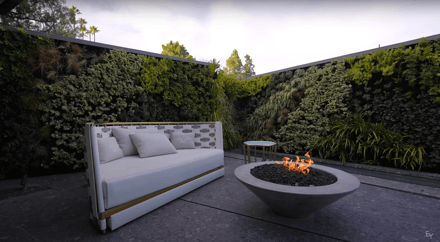
Likewise, incorporating well-recognized features of the natural world like color, air, water, sunlight, plants, and natural materials can bring the outside environment in.
Natural Shapes, Forms, Patterns, and Processes
Doing away with the rigid and symmetrical shaping of the built environment, and bringing in a natural color, shape, and flow makes all the difference.
Resist including straight lines and edges, and embrace a natural rhythm, contrast, and flow in the design. Sounds, colors, lines, and botanical features can all add a natural asymmetry to the spaces.
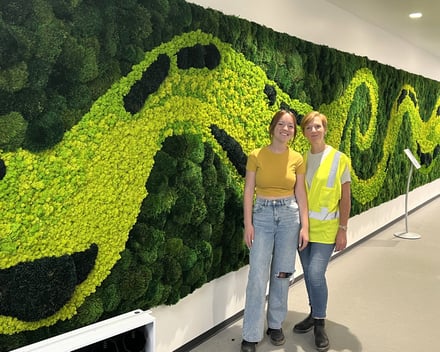
Light and Space
Humans have a complex relationship with light – we react differently to different forms of light, and our reactions inform how we use it.
Dynamic lighting and natural light can create the perfect complementary combination to demarcate spaces and change the ambience throughout a building, giving natural cues to the residents on the purpose and intention of the space.
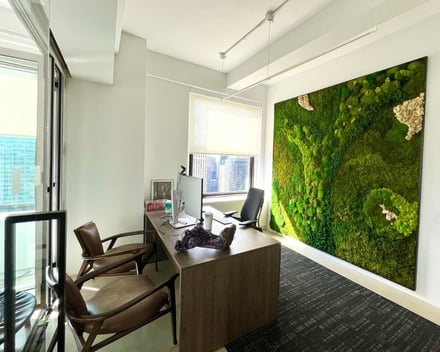
Natural References to the Surrounding Ecosystem or Topography
Evoking a response to the environment that we’ve covered with our man-made spaces can help to foster a connection to the underlying nature. Making people aware of their location and situation by replicating the nature inside the built-environment can give us a deeper connection to the spaces we inhabit.
.png?width=440&height=247&name=Untitled%20design%20(52).png)
Reflection on the Human-Nature Relationship
As we move through the elements we use, we obviously become more esoteric. However, referencing our relationship with nature gives a steady reminder of who we are, where we originated, and what we’re doing. It also gives us a beautiful design juxtaposition to use at will throughout the spaces – order vs chaos, mastery and control, security and safety, and so on.
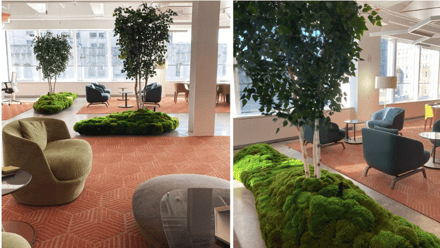
Using elements that bring us back to our (literal) roots improves wellbeing, productivity, and health, but also fosters an attachment to the spaces that we inhabit, and enables us to reach better benchmarks:
The Benefits of Biophilia
Research shows that the improvement in thinking, well-being, productivity, and health is affected positively by Biophilic Design.
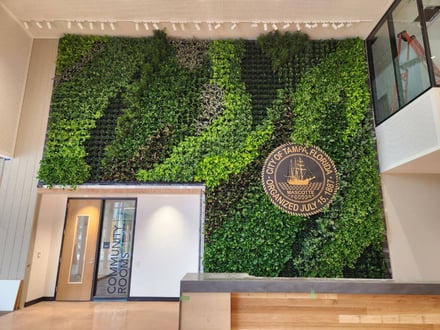
- Office design:
Productivity can be increased by 8%, rates of well-being up by 13%, increases in creativity, with reduced absenteeism and presenteeism. - Hospitality design:
Guests willing to pay 23% more for rooms with views of Biophilic elements. - Education spaces:
increased rates of learning 20-25%, improved test results, concentration levels and attendance, reduced impacts of ADHD - Healthcare spaces:
post-operative rates of recovery reduced by 8.5%, reduced pain medication by 22% - Retail:
the presence of vegetation & landscaping has been found to increase average rental rates on retail spaces with customers indicating they were willing to pay 8-12 % more for goods and services. - Homes:
can become more calming & restorative, with 7-8 % less crime attributed to areas with access to nature and can command an increase of 4-5% in property price.
With so many benefits, the more nature we can incorporate into our built-environment, the better we can be, not just as workers or taxpayers, but as humans, people, thinkers, and doers. Jordan Lacey at The Conversation weighs in: “Let’s build cities that celebrate the wild, not just efficiency and productivity.” Do it with greenwalls.
Find out more by subscribing to our blog.

